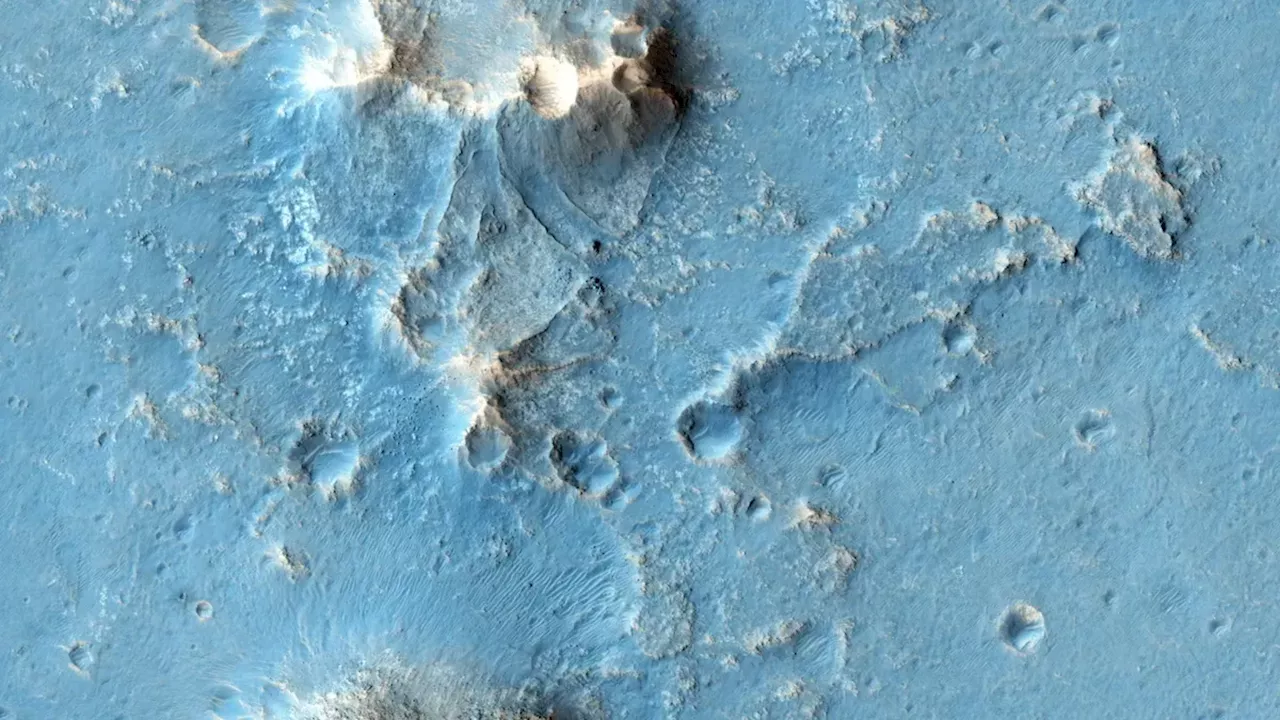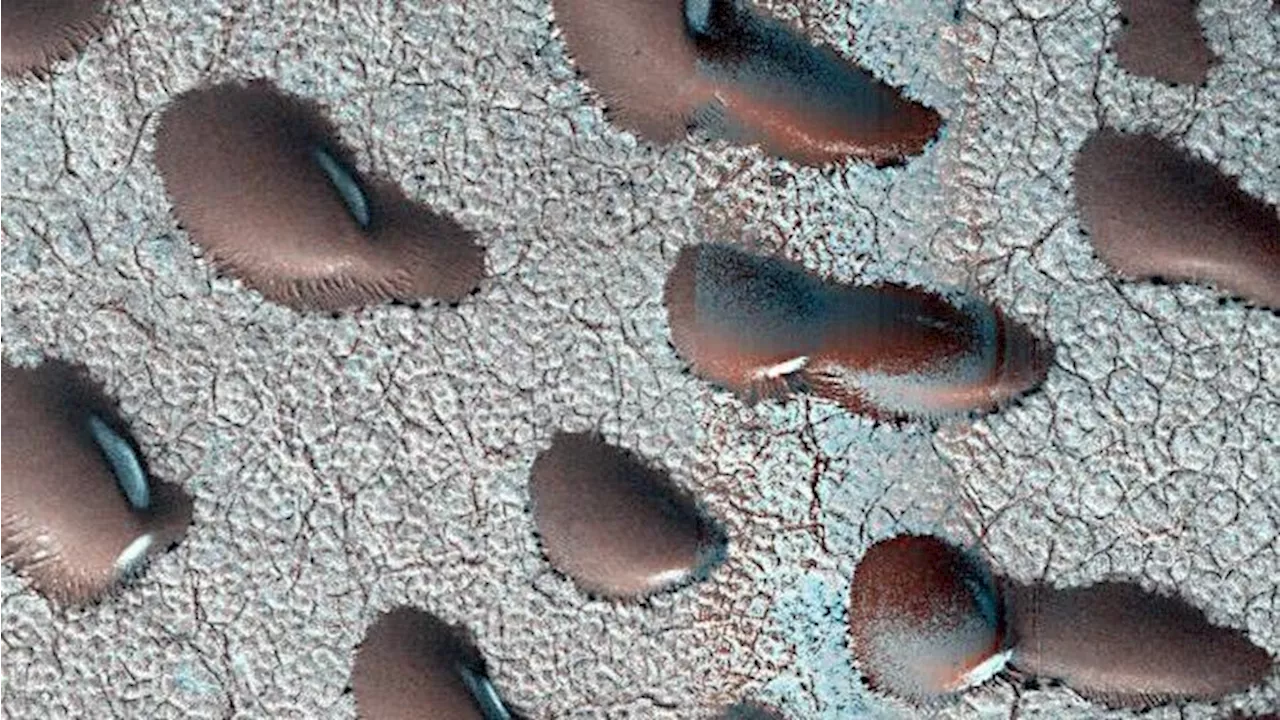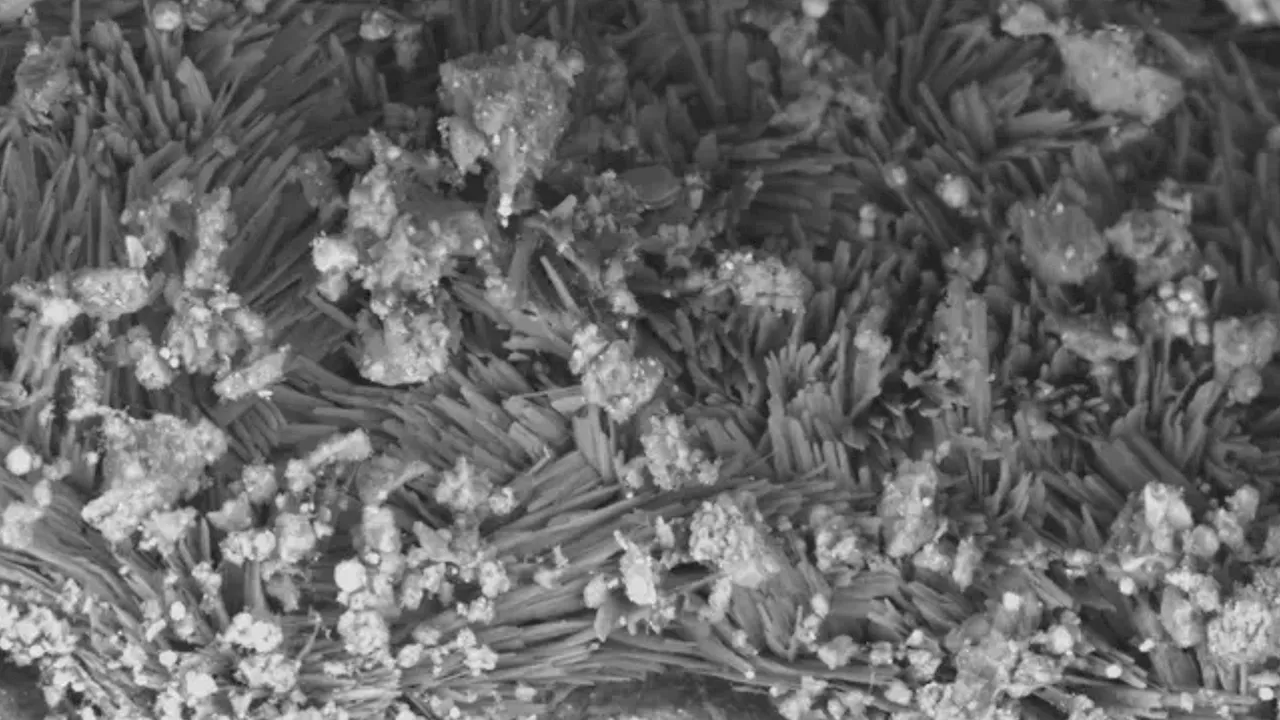Analysis of samples from the asteroid Bennu reveals the presence of unique minerals formed from evaporated water, potentially providing insights into the building blocks of life.
The quest to unravel the origins of life on Earth may hold clues scattered across our solar system . This prompted NASA to launch the OSIRIS-REx mission in 2016, targeting the near- Earth asteroid Bennu . In 2020, this mission etched its name in history by successfully collecting a sample from Bennu , marking the first U.S. asteroid sample return in nearly 50 years. The precious cargo finally arrived back on Earth in September 2023, igniting excitement within the scientific community.
Researchers eagerly sought to analyze these samples, hoping to unlock the secrets of Bennu and potentially shed light on the very beginnings of life.Now, examinations of these samples have yielded intriguing new insights into the potential for life on Earth. Scientists have discovered a unique sequence of minerals that originated from evaporated water within the Bennu samples. These minerals date back to the early solar system and include compounds previously unseen in extraterrestrial samples. A team of researchers from the Smithsonian’s National Museum of Natural History led this study. “We now know from Bennu that the fundamental ingredients for life were interacting in truly fascinating and complex ways on Bennu’s parent body,” said Tim McCoy, the museum’s curator of meteorites and co-lead author. “We’ve discovered that next step on a pathway to life.” Bennu’s parent body formed 4.5 billion years ago and once contained pockets of liquid water. As this water evaporated, it left behind brines similar to Earth’s salt flats. Using a powerful scanning electron microscope, researchers meticulously examined the extremely tiny features (less than a micrometer, or 1/100th the width of a human hair) on fragments of the Bennu asteroid. These analyses revealed the presence of sodium carbonate compounds, commonly known as soda ash, within the brine. Sodium carbonates are naturally found on Earth in evaporated lakes rich in sodium, such as Searles Lake in the Mojave Desert. The unexpected discovery of sodium carbonate in the Bennu samples spurred further investigation. McCoy compared these minerals with similar ones in the museum’s collection and consulted with colleagues studying other Bennu samples. This collaborative effort ultimately unveiled a total of 11 minerals that likely formed in a brine environment on Bennu’s parent asteroid.The mineral composition of Bennu's brine differs from Earth's, and while Bennu's brines contain intriguing minerals and elements, it remains unknown whether they could form complex organic molecules. Whether this environment could truly have given rise to life itself is still uncertain. However, the discovery of these brines represents a significant leap forward. It suggests that similar conditions might exist on other celestial bodies, such as the dwarf planet Ceres or Saturn's moon Enceladus. Interestingly, sodium carbonate has been detected on both Ceres and Enceladus. “We now know we have the basic building blocks to move along this pathway towards life, but we don’t know how far along that pathway this environment could allow things to progress,” McCoy explained in the press release. The findings were published in the journal Nature
NASA OSIRIS-Rex Bennu Asteroid Origin Of Life Minerals Brines Sodium Carbonate Earth Science Solar System
United States Latest News, United States Headlines
Similar News:You can also read news stories similar to this one that we have collected from other news sources.
 Volcanic Ash May Hold Clues to Life on MarsResearchers studying rocks on Mars using satellite data believe they were likely deposited from a massive volcanic eruption billions of years ago. The dark, volcanic ash may have protected mineral-rich rocks beneath, which hold the potential to preserve signs of ancient life. The location and distribution of these rocks suggest that groundwater upwelling may have played a role in their preservation.
Volcanic Ash May Hold Clues to Life on MarsResearchers studying rocks on Mars using satellite data believe they were likely deposited from a massive volcanic eruption billions of years ago. The dark, volcanic ash may have protected mineral-rich rocks beneath, which hold the potential to preserve signs of ancient life. The location and distribution of these rocks suggest that groundwater upwelling may have played a role in their preservation.
Read more »
 Ancient Earth Structures May Hold Clues to Planet's FormationAnalysis of seismic waves reveals two massive, stable structures deep within Earth, potentially billions of years old. These large low-shear-velocity provinces (LLSVPs) located beneath the Pacific and Africa have remained unchanged despite the planet's churning interior, suggesting they are composed of large, heat-resistant crystals. The stability and potential age of these structures offer insights into Earth's early composition and formation.
Ancient Earth Structures May Hold Clues to Planet's FormationAnalysis of seismic waves reveals two massive, stable structures deep within Earth, potentially billions of years old. These large low-shear-velocity provinces (LLSVPs) located beneath the Pacific and Africa have remained unchanged despite the planet's churning interior, suggesting they are composed of large, heat-resistant crystals. The stability and potential age of these structures offer insights into Earth's early composition and formation.
Read more »
 Frozen Martian Dunes Hold Clues to Past HabitabilityImages captured by the Mars Reconnaissance Orbiter reveal frozen sand dunes in the Red Planet's northern hemisphere, offering insights into the planet's potential for past or present life.
Frozen Martian Dunes Hold Clues to Past HabitabilityImages captured by the Mars Reconnaissance Orbiter reveal frozen sand dunes in the Red Planet's northern hemisphere, offering insights into the planet's potential for past or present life.
Read more »
 Del. Stacey Plaskett: Trump May Not Have the Hold He Thinks over All Rs in CongressDel. Stacey Plaskett, who managed Trump's second impeachment trial, believes Trump won't have the power he desires. She expects bipartisan efforts from both Democrats and Republicans who are tired of the political fight and want to serve the American people.
Del. Stacey Plaskett: Trump May Not Have the Hold He Thinks over All Rs in CongressDel. Stacey Plaskett, who managed Trump's second impeachment trial, believes Trump won't have the power he desires. She expects bipartisan efforts from both Democrats and Republicans who are tired of the political fight and want to serve the American people.
Read more »
 Tumor-secreted protein may hold the key to better treatments for deadly brain tumorMedical researchers have announced the results of an innovative treatment approach that may offer improvement in overall survival in older patients with newly diagnosed glioblastoma while maintaining quality of life. The research focused on a tumor-secreted protein identified as a potential target for therapeutic intervention.
Tumor-secreted protein may hold the key to better treatments for deadly brain tumorMedical researchers have announced the results of an innovative treatment approach that may offer improvement in overall survival in older patients with newly diagnosed glioblastoma while maintaining quality of life. The research focused on a tumor-secreted protein identified as a potential target for therapeutic intervention.
Read more »
 Despite Disney’s Surprise Fubo Deal, DirecTV and Dish Signal They May Hold Up Venu LaunchThe pay TV distributors raised a red flag to a U.S. district judge over a bid to dismiss an earlier injunction against the sports streamer after a surprise merger of Disney’s Hulu + Live TV and Fubo.
Despite Disney’s Surprise Fubo Deal, DirecTV and Dish Signal They May Hold Up Venu LaunchThe pay TV distributors raised a red flag to a U.S. district judge over a bid to dismiss an earlier injunction against the sports streamer after a surprise merger of Disney’s Hulu + Live TV and Fubo.
Read more »
